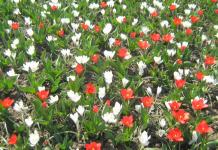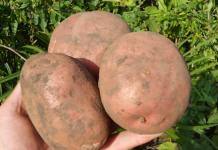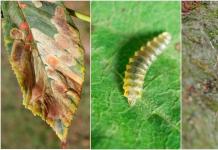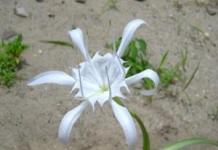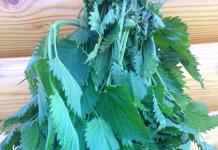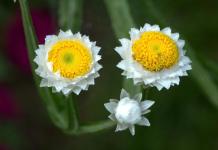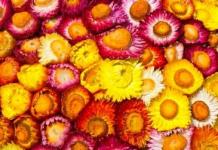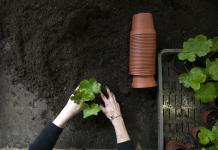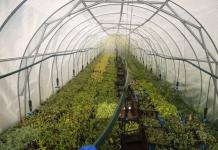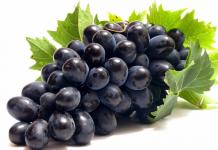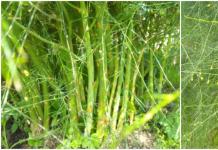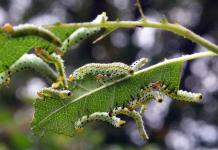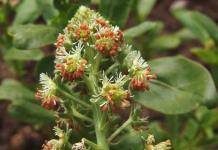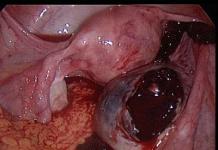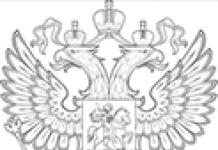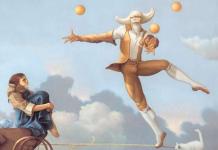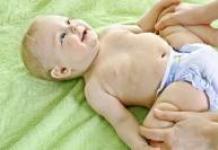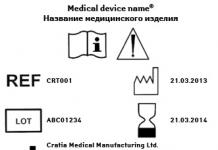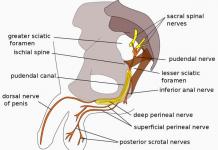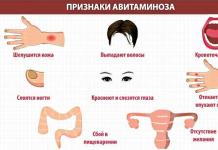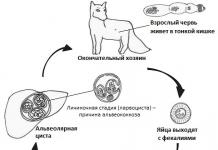Giovanni Caboto was born in Italy. The approximate date of his birth is 1450. In 1476 Caboto became a citizen of Venice. Almost nothing is known about his Venetian period. It was probably while living in Venice that Caboto became a sailor and merchant.
Europeans at that time in history were preoccupied with finding a sea route to India, the land of spices, and Caboto was no exception. He asked Arab merchants where they get the spices from. From their obscure answers, Caboto concluded that the spices would be "born" in some countries far to the northeast of the "Indies." And since Cabot considered the Earth a ball, he made a logical conclusion that the far north-east for the Indians is the north-west close to the Italians. His plan was simple - to shorten the path, starting from the northern latitudes, where the longitudes are much closer to each other. Caboto tried to interest the Spanish monarchs and the Portuguese king with his project of reaching the country of spices, but failed.
Giovanni Caboto moved to England and settled in Bristol around mid-1495. Bristol was then in charge seaport West England and the center of English fishing in the North Atlantic. There, the Italian was called John Cabot in the English manner. In this country, he found support for his ideas, including financial.
On March 5, 1496, Cabot received a letter of commendation from Henry VII, which allowed him and his sons to sail “to all parts, regions and shores of the Eastern, Western and North Seas, under British banners and flags, with five ships of any quality and load, as well as with any number of sailors and any people they want to take with them ... ”The king negotiated for himself a fifth of the income from the expedition.
Cabot's preparations for the trip took place in Bristol. Bristol merchants donated funds to equip the expedition after they received news of Columbus's discoveries. But they equipped only one small ship "Matthew" with a crew of 18 people. On May 20, 1497, Cabot sailed west from Bristol.
2 Newfoundland
John Cabot always kept just north of 52 ° N. NS. Swimming took place in calm weather, however, frequent fogs and numerous icebergs greatly impeded movement. Around June 22, a stormy wind blew up, fortunately, it soon died down. On the morning of June 24, Cabot reached some land, which he called Terra Prima Vista (in Italian - "the first land seen"). This was the northern tip of Fr. Newfoundland. In one of the nearest harbors (Cape Bonavista), he landed and declared the country the possession of the English king. Cabot then moved southeast near the heavily indented coastline, circled the Avalon Peninsula and in the Gulf of Placentia, reaching approximately 46 ° 30 "N and 55 ° W, turned back to the" point of departure. " On the Avalon Peninsula, he saw huge shoals of herring and cod, thus discovering the Great Newfoundland Bank, a large - more than 300 thousand km² - sandbank in the Atlantic, one of the richest fishing areas in the world.
The entire reconnaissance route off the Newfoundland coast took about 1 month. Cabot considered the surveyed land inhabited, although he did not notice people there. On July 20, he headed for England, adhering to the same 52 ° N. sh., and on August 6 arrived in Bristol. Cabot correctly assessed his "fish" find, announcing in Bristol that the British now need not go to Iceland for fish.
3 England
After Cabot's return, a certain Venetian merchant wrote to his homeland: "Cabot is showered with honors, called a great admiral, he is dressed in silk, and the British run after him like crazy." This message apparently greatly exaggerated Cabot's success. It is known that he, probably as a foreigner and a poor man, received a reward of 10 pounds sterling from the king of England and, in addition, he was assigned an annual pension of 20 pounds. The map of Cabot's maiden voyage has not survived. The Spanish ambassador in London informed his sovereigns that he had seen this map, examined it and concluded that "the distance traveled did not exceed four hundred leagues" - 2,400 km. The Venetian merchant, who reported on the success of his fellow countryman, determined the distance covered by him at 4200 km and suggested that Cabot passed 1800 km along the coast of the “kingdom of the great khan”. However, the phrase from the king's message - "to the one [who] discovered a new island" - clearly shows that part of the newly discovered land Cabot considered an island. Henry VII also "calls" him "The Newly Discovered Island" (Newfoundland).
4 North America
At the beginning of May 1498, a second expedition headed west from Bristol, led by John Cabot, which had at its disposal a flotilla of five ships. Even less information has come down to us about the second expedition than about the first. There is no doubt only that the English ships in 1498 reached the North American continent and passed along its eastern coast far to the southwest. Sailors sometimes disembarked ashore and met there people dressed in animal skins, who had neither gold nor pearls. They were North American Indians. Due to a lack of supplies, the expedition was forced to turn back and return to England in the same year 1498. Historians suggest that John Cabot died on the way, and command of the ships passed to his son Sebastian Cabot.

In the eyes of the British, the second expedition did not pay off. It cost a lot of money and did not even bring hopes of profit (the sailors did not pay attention to the country's fur wealth). For several decades, the British made no new serious attempts to sail by the western route to East Asia.
The great geographical achievements of Cabot's second expedition are known not from English, but from Spanish sources. Juan La Cosa's map shows, far north and northeast of Hispaniola and Cuba, a long coastline with rivers and a number of place names, with a bay that reads "the sea opened by the British." It is also known that Alonso Ojeda at the end of July 1500, when concluding an agreement with the crown for the expedition of 1501-1502. pledged to continue the discovery of the mainland "right up to the lands visited by British ships." Finally, Pietro Martyr reported that the British "reached the line of Gibraltar" (36 ° N lat.), That is, they advanced somewhat south of the Chesapeake Bay.
Mysterious disappearances. Mysticism, secrets, solutions Dmitrieva Natalia Yurievna
John Cabot
John Cabot
This story took place five centuries ago. Over the years, its details have faded. There are only scant facts from the life of this navigator-discoverer, proving once again that since ancient times sea voyages were full of dangers and unsolved disappearances.
John Cabot (more precisely, Giovanni Caboto) is an Italian navigator who went down in history as the discoverer of the east coast of North America. He was born in Genoa in 1450. At the age of 11, he moved with his family to Venice.
Giovanni, already in his youth, chose the difficult path of a navigator and entered the service of a Venetian trading company. On the ships she provided, Caboto went to the Middle East for Indian goods. He also had occasion to visit Mecca, to communicate with Arab merchants selling spices. Giovanni asked them where the merchants were bringing their goods from. From their stories, the sailor was able to form the idea that outlandish spices originate from lands located somewhere far from India, in the northeast direction from it.
John Cabot was a supporter of the progressive and yet unproven at that time concept of the spherical shape of the earth. He reasonedly calculated that what is the far northeast for India is a fairly close northwest for Italy. The idea of sailing to the cherished lands, going west, did not leave him. But their own funds were not enough to equip the expedition.
In 1494, Giovanni Caboto moved to England and took British citizenship. In England, his name began to sound like John Cabot. He settled in the westernmost port of the country - Bristol. By this time, the idea of reaching new lands in a different, western way was literally in the air. The first successes made by Christopher Columbus (the discovery of new lands in the western part of the Atlantic Ocean) spurred the Bristol merchants to equip their expedition. They obtained written permission from King Henry VII, who gave the go-ahead for research expeditions with the aim of annexing new lands to England. The merchants, at their own expense, equipped one ship, which was supposed to go on reconnaissance. They entrusted John Cabot, at that time already an experienced and eminent navigator, to lead the expedition. The ship was named Matthew.
The first expedition of John Cabot, in 1497, was successful. He managed to reach the northern coast of the island, later named Newfoundland. The captain went ashore in one of the ports and declared the island to be the possession of the British crown. Having set off from the island, the ship continued its course along its coast, to the southeast. Soon, John Cabot discovered a vast shelf bank, very rich in fish (later this area was called the Great Newfoundland Bank and long time considered one of the largest fishing regions in the world). With the news of his discovery, the captain returned to Bristol.
The Bristol merchants were greatly inspired by the results of the first expedition. They immediately raised funds for the second, this time more impressive - there were already five ships in it. The expedition was undertaken in 1498, the eldest son of John Cabot, Sebastian, took part in it. But alas, this time expectations were not met. Only four ships returned from the expedition, led by Sebastian Cabot. The fifth ship, on which John himself sailed, disappeared under mysterious circumstances.
Few people could be surprised by such incidents in those days. The ship could get into a storm and crash, could get a hole and sink, the crew could be knocked down by some deadly disease caught on the voyage. Many dangers lie in wait for seafarers, who are left alone with a formidable element. Which of them became the reason for the disappearance of the famous explorer John Cabot remains a mystery to this day.
The son of the famous navigator, Sebastian Cabot, continued his father's work. He left a bright mark in the history of the era of the great geographical discoveries, making expeditions under both the British and Spanish flags and exploring the Americas.
From the book Daily Life in California during the Gold Rush by Crete LilianJohn Bidwell John Bidwell, who arrived in California in 1841
From the book of 100 great Jews author Shapiro MichaelJOHN VON NEUMAN (1903-1957) Hungarian Jew John von Neumann was perhaps the last member of a now disappearing breed of mathematician, equally comfortable in pure and applied mathematics (as in other fields of science and art). Belonging to
From the book of 100 Great Prisoners [with pictures] author Ionina NadezhdaJohn Brown The name of John Brown, whose ancestors came to America from England in the 17th century in search of freedom of conscience and a democratic system, is associated with the struggle of American blacks for their rights. The future Negro liberation fighter was born in 1800 in Connecticut - the place
From the book London by Johnson. About the people who made the city, who made the world author Johnson BorisJohn Wilkes Father of Liberty It was February 1768. England was still in the grip of a mini-ice age then, the Thames was frozen again, Westminster was cold as hell. One morning in a beautiful city mansion near Deans Yard, in the place of which now
From Asa's book of illegal intelligence the author Shvaryov Nikolay AlexandrovichJOHN KERNCROSS D. Kerncross was born in 1913 in Scotland. After Cambridge he was admitted to the Foreign Office, from 1940 he became the personal secretary of Lord Hankey, who was directly related to the secret services. A lot of material was received from Kerncross about
From the book The Golden Age of Sea Robbery the author Dmitry KopelevSir John Captain William's youngest son, John, was born in 1532. After the death of his father, he did business with his older brother. True, each of them remained independent: William was engaged in business in Plymouth, and trade deals with the Canary Islands fell on John's shoulders.
From the book of 500 great travels the author Nizovsky Andrey YurievichStubborn Sebastian Cabot In March 1525, the Spanish king commissioned the Venetian navigator Sebastian Cabot (it. Cabot) to lead an expedition to the New World, whose task was astronomically precise establishment of the boundaries defined by Tordesillas.
From the book Geniuses and Villains of Russia in the 18th century the author Arutyunov Sarkis ArtashesovichJOHN COOK Why did Cook become so fond of Russia and St. Petersburg? Of course, the modern reader will be interested to know what Cook actually did in St. Petersburg. But first, let's clarify that this is not an English naval sailor, explorer, cartographer and discoverer Cook (James Cook!),
From the book Donbass: Russia and Ukraine. History essays the author Buntovsky Sergey YurievichJohn Hughes The tsarist government stubbornly sought capitalists to build iron and rail plants near the unprotected southern borders of the empire. The fates of entrepreneurs and managers of Russian companies developed in different ways. Some, not knowing the technique, others,
From the book Famous Writers the author Pernatiev Yuri SergeevichJohn Steinbeck. Full name - Steinbeck John Ernst (02/27/1902 - 12/20/1968) American writer, laureate Nobel Prize(1962) Novels "The Golden Cup", "And They Lost the Battle", "Grapes of Wrath", "To the East of Eden", "Winter of Our Trouble"; novels "Quarter Tortilla-Flat", "About mice and
From the book Architects of the Computer World the author Chastikov Arkady the author From book The World History in sayings and quotes the author Dushenko Konstantin Vasilievich From the book World History in Sayings and Quotes the author Dushenko Konstantin Vasilievich From the book World History in Sayings and Quotes the author Dushenko Konstantin Vasilievich From the book World History in Sayings and Quotes the author Dushenko Konstantin Vasilievich K: Wikipedia: Articles without images (type: not specified)Genoese Giovanni Caboto(Italian Giovanni Caboto, approx. (1450 ) , Genoa - better known as John Cabot(eng. John Cabot)) - Italian and French navigator and merchant in the English service, who first explored the coast of Canada.
Biography
Origin
Was born in Italy. Known by the names: in the Italian manner - Giovanni Cabot, John Cabot - in English, Jean Cabo - in French, Juan Caboto - in Spanish. Various variants of the name are found in non-Italian sources of the 15th century about Cabot.
The approximate date of birth of Cabot is 1450, although it is possible that he was born a little earlier. The alleged birthplaces are Gaeta (Italian province of Latina) and Castiglione Chiavarese in the province of Genoa.
In 1496, Cabot's contemporary, the Spanish diplomat Pedro de Ayala, mentioned him in one of his letters to Ferdinand and Isabella as "another Genoese, like Columbus, offering the English king an enterprise similar to a voyage to India."
It is known that in 1476 Cabot became a citizen of Venice, which indicates that the Cabot family moved to Venice in 1461 or earlier (obtaining Venetian citizenship was possible only if they had lived in this city for the previous 15 years).
Trips
Preparation and financing
In Seville and Lisbon, Cabot tried to interest the Spanish monarchs and the Portuguese king with his project of reaching the spice country through North Asia, but failed. Cabot moved with his entire family to England around the middle of 1495, where they began to call him in the English manner John Cabot. As a result, he found financial support in this country, that is, like many other Italian pioneers, including Columbus, Cabot was hired by another country, and in this case England. His travel plan, apparently, began to emerge in the late 70s - early 80s, when he went to the Middle East for Indian goods. Then he asked the Arab merchants where they get the spices from. From their obscure answers, he concluded that the spices would be "born" in some countries located far to the northeast of the "Indies". And since Cabot considered the Earth to be a ball, he made a logical conclusion that the far north-east for the Indians - the "homeland of spices" - is the north-west close to the Italians. His plan was simple - to shorten the path, starting from the northern latitudes, where the longitudes are much closer to each other.
Upon arrival in England, Cabot immediately went to Bristol in search of support - many historians agree on this.
All subsequent expeditions of Cabot started in this port, and it was the only English city that conducted research expeditions to the Atlantic to Cabot. In addition, Cabot's letter of commendation prescribed that all expeditions should be undertaken from Bristol. Although Bristol appears to be the most convenient city for Cabot to seek funding, British historian Alvin Ruddock, who held a revisionist view of the life path Cabot, announced that it had found evidence that in fact Cabot first went to London, where he enlisted the support of the Italian community. Ruddock suggested that the patron saint of Cabot was a monk of the order of St. Augustine Giovanni Antonio de Carbonariis, former in good relationship with King Henry VII and introduced Cabot to him. Ruddock argued that this is how Cabot obtained a loan from an Italian bank in London.
Confirming her words is difficult as she ordered her notes to be destroyed after her death in 2005. Organized in 2009 by British, Italian, Canadian and Australian researchers at the University of Bristol, The Cabot Project aims to find missing evidence in support of Ruddock's claims of early travel and other poorly understood facts about Cabot's life.
The letter of commendation to Cabot from Henry VII (March 5, 1496) allowed Cabot and his sons to sail "to all parts, regions and shores of the East, West and North Seas, under British banners and flags, with five ships of any quality and load, as well as with any the number of sailors and any people they want to take with them ... ”The king negotiated for himself a fifth of the income from the expedition. The permit deliberately did not indicate a southerly direction in order to avoid collisions with the Spaniards and Portuguese.
Cabot's preparations for the trip took place in Bristol. Bristol merchants donated funds for the equipment of a new Western expedition, having received news of Columbus's discoveries. Perhaps they put Cabot at the head of the expedition, perhaps he volunteered himself. Bristol was the main seaport of West England and the center of English fishing in the North Atlantic. Since 1480, Bristol merchants several times sent ships to the west in search of the mythical island of the blessed Brazil, allegedly located somewhere in the Atlantic Ocean and the "Seven Golden Cities", but all the ships returned without making any discoveries. Many, however, believed that Brazil had been reached by the Bristolians earlier, but then information about his whereabouts was allegedly lost.
First trip
Since Cabot received his letter of commendation in March 1496, it is believed that the voyage took place in the summer of the same year. Everything that is known about the maiden voyage is contained in a letter from the Bristol merchant John Day, addressed to Christopher Columbus and written in the winter of 1497/98. Dey, moreover, later reached the cape of those lands where Cabot intended to go. Basically, it is said about the voyage of 1497. Only one sentence is dedicated to the first voyage: "Since Your Grace is interested in information about the maiden voyage, this is what happened: he went on the same ship, his crew confused him, there were few supplies, and he faced bad weather, and decided to turn back."
Second journey
Almost all information about the voyage of 1497 is drawn from four small letters and in the Bristol Chronicle of Maurice Toby. Chronicle contains dry facts about the second voyage of Cabot. Conducted since 1565, the Bristol Chronicle in the record of 1496/97 says: “This year, on the day of St. John the Baptist, the land of America was found by merchants from Bristol, on a Bristol ship named Matthew; this ship departed from Bristol on the second day of May and returned home on 6 August. " This record is valuable because of all the surviving sources, only it contains information about the time of the beginning and end of the expedition. In addition, this is the only source before the 17th century that mentions the name of the Cabot ship. Despite the fact that this source is late, some details are confirmed by sources about which the Bristol chronicler could not have known. Therefore, it is believed that he copied basic information from some earlier chronicle, replacing the words “ new earth"(" New found land ", or something similar) with the word" America ", which became common in 1565. Being confirmed by other sources, the information from this chronicle is considered reliable.
The aforementioned so-called John Day letter was written by a Bristol merchant in the winter of 1497/98 to a man who is almost certainly identified as Christopher Columbus. Columbus was probably interested in sailing, because if the lands discovered by Cabot were located west of the meridian established by the Treaty of Tordesillas as the border of the spheres of influence of Spain and Portugal, or if Cabot went west than planned, the voyage would represent an open challenge to Columbus' monopoly on Western exploration. The letter is valuable in that its author was, presumably, directly connected with the main characters of the trip and collected all the details about it that he could. Day writes that Cabot's ship sailed 35 days before land was sighted; for about a month Cabot explored the coast, advancing to the aforementioned promontory, which was located closest to the shores of Ireland; in 15 days the expedition reached the shores of Europe.
In another letter, written on 23 August 1497 by the Venetian merchant Lorenzo Pasqualigo, Cabot's voyage is mentioned as a rumor: “This Venetian of ours, who left Bristol in a small ship, returned and says that he found land 700 leagues from Bristol ... he sailed along the shores of 300 leagues ... and did not see a soul; but he brought here to the king some things ... so he judges by them that there are inhabitants on that land. "
The author of the third letter, of a diplomatic nature, is unknown. It was written on August 24, 1497, apparently to the ruler of Milan. Cabot's voyage is only briefly mentioned in this letter, and it is also said that the king intends to supply Cabot for a new voyage with fifteen or twenty ships.
The fourth letter is also addressed to the Milanese ruler and was written by the Milanese ambassador in London, Raimondo de Raimondi de Soncino, on December 18, 1497. The letter appears to be based on personal conversations between its author and Cabot and his Bristol compatriots, who are called “key people in this enterprise” and “ wonderful seafarers ". It also says that Cabot found a place in the sea, "swarming" with fish, and correctly assessed his find, announcing in Bristol that now the British may not go to Iceland for fish.
In addition to the above four letters, Dr. Alvin Ruddock claimed to have found another, written on 10 August 1497 by the London-based banker Giovanni Antonio do Carbonariis. This letter remains to be found, as it is unknown in which archive Ruddock found it. From her comments it can be assumed that the letter does not contain a detailed description of the voyage. However, the letter could be a valuable source if, as Ruddock argued, it does provide new evidence to support the thesis that Bristol's mariners had discovered land on the other side of the ocean before Cabot.
The known sources do not agree on all the details about Cabot's journey, therefore they cannot be considered completely reliable. However, the generalization of the information presented in them allows us to say that:
Cabot reached Bristol on August 6, 1497. It was decided in England that he had discovered the "kingdom of the great khan," as China was called at the time.
Third journey
Returning to England, Cabot immediately went to the royal audience. On August 10, 1497, he was awarded as a foreigner and a poor man £ 10, the equivalent of two years' earnings for an ordinary artisan. Upon arrival, Cabot was honored as a discoverer. On August 23, 1497, Raimondo de Raimondi de Soncino wrote that Cabot "is called a great admiral, he is dressed in silk, and these Englishmen are running after him like crazy." This admiration did not last long, as over the next few months the king's attention was captured by the Second Korni Uprising of 1497. Having restored his power in the region, the king again turned his attention to Cabot. In December 1497, Cabot was awarded a pension of £ 20 a year. In February of the following year, Cabot was awarded a diploma for the second expedition. The great chronicle of London reports that Cabot sailed from Bristol in early May 1498 with a fleet of five ships. Some of the ships are said to have been loaded with goods, including luxury goods, suggesting that the expedition hoped to enter into trade links. In a letter from the Spanish plenipotentiary in London, Pedro de Ayala, Ferdinand and Isabella, it is reported that one of the ships got into a storm in July and was forced to stop off the coast of Ireland, while the rest of the ships continued on their way. At the moment, very few sources are known about this expedition. What is certain is that English ships in 1498 reached the North American mainland and sailed along its eastern coast far to the southwest. The great geographical achievements of Cabot's second expedition are known not from English, but from Spanish sources. The famous map of Juan de la Cosa (the same Cosa who took part in the first Columbus expedition and was the captain and owner of its flagship Santa Maria) shows a long coastline far north and northeast of Hispaniola and Cuba with rivers and nearby geographical names, as well as the bay, which says: "the sea opened by the British" and with several English flags.
It is believed that Cabot's fleet got lost in the ocean waters. It is believed that John Cabot died on the way, and command of the ships passed to his son Sebastian Cabot. More recently, Dr. Alvin Ruddock allegedly found evidence that Cabot returned with his expedition to England in the spring of 1500, that is, that Cabot returned after a long two-year exploration of the east coast of North America, all the way to the Spanish territories in the Caribbean.
Offspring
Cabot's son Sebastian later made at least one voyage — in 1508 — to North America in search of the Northwest Passage.
Sebastian was invited to Spain as the chief cartographer. In 1526-1530. he led a large Spanish expedition to the shores of South America. Reached the mouth of the La Plata River. Along the Parana and Paraguay rivers it penetrated deep into the South American continent.
Then he was again lured by the British. Here Sebastian received the post of chief superintendent of the maritime department. He was one of the founders of the English navy. He also initiated attempts to reach China by moving east, that is, along the current northern sea route. An expedition organized by him under the leadership of Chancellor reached the mouth of the Northern Dvina in the area of present-day Arkhangelsk. From here Chancellor reached Moscow, where in 1553 he concluded a trade agreement between England and Russia [Richard Chancellor visited Moscow in 1554, under Ivan the Terrible!].
Sources and historiography
The manuscripts and primary sources about John Cabot are very few, but the known sources are collected together in many works of researchers. Better general collections of documents about Cabot Sr. and Cabot Jr. are the collection of Biggar (1911) and Williamson (Williamson). Below is a list of known collection of sources about Cabot in various languages:
- R. Biddle, A memoir of Sebastian Cabot (Philadelphia and London, 1831; London, 1832).
- Henry Harrisse, Jean et Sébastien Cabot (1882).
- Francesco Tarducci, Di Giovanni e Sebastiano Caboto: memorie raccolte e documentate (Venezia, 1892); Eng. trans., H. F. Brownson (Detroit, 1893).
- S. E. Dawson, "The voyages of the Cabots in 1497 and 1498,"
- Henry Harrisse, John Cabot, the discoverer of North America, and Sebastian Cabot his son (London, 1896).
- G. E. Weare, Cabot's discovery of North America (London, 1897).
- C. R. Beazley, John and Sebastian Cabot (London, 1898).
- G. P. Winship, Cabot bibliography, with an introductory essay on the careers of the Cabots based on an independent examination of the sources of information (London, 1900).
- H. P. Biggar, The voyages of the Cabots and of the Corte-Reals to North America and Greenland, 1497-1503 (Paris, 1903); Precursors (1911).
- Williamson, Voyages of the Cabots (1929). Ganong, "Crucial maps, i."
- G. E. Nunn, The mappemonde of Juan de La Cosa: a critical investigation of its date (Jenkintown, 1934).
- Roberto Almagià, Gli italiani, primi esploratori dell 'America (Roma, 1937).
- Manuel Ballesteros-Gaibrois, "Juan Caboto en España: nueva luz sobre un problema viejo," Rev. de Indias, IV (1943), 607-27.
- R. Gallo, "Intorno a Giovanni Caboto," Atti Accad. Lincei, Scienze Morali, Rendiconti, ser. VIII, III (1948), 209-20.
- Roberto Almagià, "Alcune considerazioni sui viaggi di Giovanni Caboto," Atti Accad. Lincei, Scienze Morali, Rendiconti, ser. VIII, III (1948), 291-303.
- Mapas españoles de América, ed. J. F. Guillén y Tato et al. (Madrid, 1951).
- Manuel Ballesteros-Gaibrois, "La clave de los descubrimientos de Juan Caboto," Studi Colombiani, II (1952).
- Luigi Cardi, Gaeta patria di Giovanni Caboto (Roma, 1956).
- Arthur Davies, "The 'English' coasts on the map of Juan de la Cosa," Imago Mundi, XIII (1956), 26-29.
- Roberto Almagià, "Sulle navigazioni di Giovanni Caboto," Riv. geogr. ital., LXVII (1960), 1-12.
- Arthur Davies, " The last voyage of John Cabot, "Nature, CLXXVI (1955), 996-99.
- D. B. Quinn, "The argument for the English discovery of America between 1480 and 1494," Geog. J. CXXVII (1961), 277-85. Williamson, Cabot voyages (1962).
Literature on the topic:
- Magidovich I. P., Magidovich V. I. Essays on the history of geographical discoveries. T.2. Great geographical discoveries (late 15th - mid-17th century) - M., Enlightenment, 1983.
- Henning R. Unknown lands. In 4 volumes - M., Foreign Literature Publishing House, 1961.
- Evan T. Jones, Alwyn Ruddock: John Cabot and the Discovery of America, Historical Research Vol 81, Issue 212 (2008), pp. 224-254.
- Evan T. Jones, Henry VII and the Bristol expeditions to North America: the Condon documents, Historical Research, 27 Aug 2009.
- Francesco Guidi-Bruscoli, "John Cabot and his Italian Financiers", Historical Research(Published online, April 2012).
- J.A. Williamson, The Cabot Voyages and Bristol Discovery Under Henry VII (Hakluyt Society, Second Series, No. 120, CUP, 1962).
- R. A. Skelton, "CABOT (Caboto), JOHN (Giovanni)", Dictionary of Canadian Biography Online (1966).
- H.P. Biggar (ed.), The Precursors of Jacques Cartier, 1497-1534: a collection of documents relating to the early history of the dominion of Canada (Ottawa, 1911).
- O. Hartig, "John and Sebastian Cabot", The Catholic Encyclopedia (1908).
- Peter Firstbrook, "The Voyage of the MATTHEW: Jhon Cabot and the Discovery of North America", McClelland & Steward Inc. The Canadien Pablishers (1997).
Write a review on "Cabot, John"
Notes (edit)
- (PDF) (Press release) (in Italian). (TECHNICAL DOCUMENTARY "CABOTO": I and Catalan origins have been proved to be without foundation. "CABOT". Canadian Biography. 2007. Retrieved 17 May 2008. .
- Department of Historical Studies, University of Bristol. Retrieved 20 February 2011. .
- Magidovich I.P., Magidovich V.I. Essays on the history of geographical discoveries. T.2. Great geographical discoveries (late 15th - mid 17th century) - M., Enlightenment. 1983.S. 33.
- Derek Croxton "The Cabot Dilemma: John Cabot" s 1497 Voyage & the Limits of Historiography. University of Virginia. Retrieved 17 May 2008. .
- .
- Magidovich I.P., Magidovich V.I. Essays on the history of geographical discoveries. T.2. Great geographical discoveries (late 15th - mid 17th century) - M., Enlightenment. 1983.S. 33. .
- Evan T. Jones, Alwyn Ruddock: John Cabot and the Discovery of America, Historical Research Vol 81, Issue 212 (2008), pp. 231-34. .
- .
- .
- .
- .
- .
- .
- .
- Evan T. Jones, Alwyn Ruddock: John Cabot and the Discovery of America, pp. 237-40. .
- .
- John Day letter. .
- Williamson, The Cabot Voyages, p. 214. .
- Williamson, The Cabot Voyages, pp. 217-19. .
- .
- Evan T. Jones, Alwyn Ruddock: John Cabot and the Discovery of America, pp. 242-9. .
Links
|
||||||||||||||||||||
Excerpt from Cabot, John
Pierre also moved to the church, which had something that caused exclamations, and dimly saw something leaning against the fence of the church. From the words of his comrades who had seen better than him, he learned that it was something like a corpse of a man, standing upright by the fence and smeared with soot on his face ...- Marchez, sacre nom ... Filez ... trente mille diables ... [Go! go! Damn it! Devils!] - were heard the curses of the escorts, and the French soldiers, with renewed anger, dispersed the crowd of prisoners with their cleavers, looking at the dead man.
The prisoners walked along the lanes of Khamovnikov alone with their convoy and carts and wagons belonging to the convoy and driving behind; but when they went out to the grocery stores, they found themselves in the middle of a huge, closely moving artillery convoy, mixed with private carts.
At the bridge itself, everyone stopped, waiting for those who were driving ahead to advance. From the bridge, endless rows of other moving carts opened up behind and in front of the prisoners. To the right, where the Kaluga road curved past Neskuchny, disappearing in the distance, endless rows of troops and carts stretched. These were the troops of the Beauharnais corps, which left first of all; back, along the embankment and across the Stone Bridge, Ney's troops and carts stretched.
Davout's troops, to which the prisoners belonged, marched through the Crimean ford and already partly entered Kaluzhskaya Street. But the carts were so stretched out that the last carts of Beauharnais had not yet left Moscow for Kaluzhskaya Street, and the head of Ney's troops was already leaving Bolshaya Ordynka.
Having passed the Crimean ford, the prisoners moved a few steps and stopped, and again moved, and from all sides the carriages and people were more and more embarrassed. After walking for more than an hour those several hundred steps that separate the bridge from Kaluzhskaya Street, and reaching the square where Zamoskvoretsky and Kaluzhskaya streets converge, the prisoners, compressed into a heap, stopped and stood for several hours at this intersection. From all sides one could hear incessant, like the sound of the sea, the rumbling of wheels, and the stamping of feet, and incessant angry screams and curses. Pierre stood pressed against the wall of a burnt house, listening to this sound, which merged in his imagination with the sounds of a drum.
Several captured officers, in order to see better, climbed the wall of the burnt house, next to which Pierre was standing.
- To the people! Eka to the people! .. And they piled on the cannons! Look: furs ... - they said. - You see, the scoundrels, they robbed ... That one is in the back, on the cart ... After all, this is from an icon, by God! .. These are Germans, it must be. And our man, by God! .. Ah, scoundrels! .. You see, he’s loaded up, he’s going to force! Here are those on, droshky - and they captured! .. See, I sat down on the chests. Fathers! .. Fight! ..
- So it in the face then, in the face! You can't wait that way until evening. Look, look ... and this is surely Napoleon himself. See, what horses! in monograms with a crown. This is a foldable house. Dropped the bag, does not see. Again they fought ... A woman with a child, and not bad. Yes, how can they let you through ... Look, there is no end. Russian girls, by God, girls! How calmly they sat in the carriages!
Again, a wave of general curiosity, as in the vicinity of the church in Khamovniki, pushed all the prisoners to the road, and Pierre, thanks to his height over the heads of others, saw what had so attracted the curiosity of the prisoners. In three carriages, mingled between the charging boxes, they rode, closely sitting on top of each other, discharged, in bright colors, rouged, something screaming in squeaky voices of women.
From the moment Pierre realized the appearance of a mysterious force, nothing seemed strange or scary to him: not a corpse smeared with soot for fun, not these women hurrying somewhere, not the conflagration of Moscow. Everything that Pierre now saw made almost no impression on him - as if his soul, preparing for a difficult struggle, refused to accept impressions that could weaken it.
The women's train has passed. Behind him were carts again, soldiers, wagons, soldiers, decks, carriages, soldiers, boxes, soldiers, and occasionally women.
Pierre did not see people separately, but saw their movement.
All these people, horses seemed to be chased by some invisible force. All of them, during the hour during which Pierre watched them, floated out of different streets with the same desire to pass quickly; all of them in the same way, when faced with others, began to get angry, to fight; white teeth bared, eyebrows frowned, all the same curses were thrown around, and on all faces there was the same youthfully determined and cruelly cold expression, which in the morning struck Pierre at the sound of the drum on the corporal's face.
Already before the evening, the convoy commander gathered his team and, with a shout and disputes, squeezed into the carts, and the prisoners, surrounded on all sides, went out onto the Kaluga road.
We walked very quickly, without resting, and stopped only when the sun began to set. The carts moved one on top of the other, and people began to prepare for an overnight stay. Everyone seemed angry and displeased. For a long time, curses, angry screams and fights were heard from different sides. The carriage, which was driving behind the escorts, moved over the convoy's wagon and pierced it with a drawbar. Several soldiers from different directions ran to the wagon; some hit the heads of the horses harnessed in the carriage, turning them around, others fought among themselves, and Pierre saw that one German was badly wounded in the head with a sword.
It seemed that all these people were experiencing now, when they stopped in the middle of the field in the cold twilight of an autumn evening, the same feeling of unpleasant awakening from the haste and impetuous movement that swept everyone when leaving. Having stopped, everyone seemed to understand that it was not yet known where they were going, and that on this movement there would be a lot of hard and difficult things.
The prisoners at this halt were treated even worse by the escorts than during the march. At this halt, for the first time, the meat food of the prisoners was given out in horse meat.
From the officers to the last soldier, there was a seemingly personal bitterness against each of the prisoners in everyone, so unexpectedly replacing the previously friendly relationship.
This anger intensified even more when, when counting the prisoners, it turned out that during the bustle, leaving Moscow, one Russian soldier, pretending to be sick from the stomach, fled. Pierre saw a Frenchman beat a Russian soldier for walking far from the road, and heard the captain, his friend, reprimand the non-commissioned officer for the escape of the Russian soldier and threaten him with court. To the non-commissioned officer's excuse that the soldier was ill and could not walk, the officer said that it was ordered to shoot those who would lag behind. Pierre felt that the fatal force that crushed him during the execution and which was invisible during the captivity now again took possession of his existence. He was scared; but he felt how, in proportion to the efforts that the fatal force was making to crush him, a life force independent of it grew and grew in his soul.
Pierre had supper with a soup of rye flour with horse meat and talked to his comrades.
Neither Pierre and none of his comrades talked about what they saw in Moscow, nor about the rude treatment of the French, nor about the order to shoot, which was announced to them: everyone was, as if in rebuff to the worsening situation, especially lively and cheerful ... They talked about personal memories, about funny scenes seen during the campaign, and hushed up conversations about the present situation.
The sun has set long ago. Bright stars lit up here and there across the sky; the red, fire-like glow of a rising full month spread over the edge of the sky, and a huge red ball vibrated surprisingly in the grayish haze. It was getting light. The evening was already over, but the night had not yet begun. Pierre got up from his new comrades and walked between the fires on the other side of the road, where, he was told, the captured soldiers were standing. He wanted to talk to them. On the road, a French sentry stopped him and told him to turn back.
Pierre returned, but not to the fire, to his comrades, but to the unharnessed cart, which had no one. He tucked his legs and bowed his head, sat down on the cold ground at the wheel of the cart and sat for a long time motionless, thinking. More than an hour passed. Pierre was not disturbed by anyone. Suddenly he burst out laughing with his thick, good-natured laugh, so loudly that people looked around in surprise at this strange, apparently lonely laugh.
- Ha, ha, ha! - Pierre laughed. And he spoke aloud to himself: - The soldier did not let me in. Caught me, locked me up They hold me captive. Who me? Me! Me - my immortal soul! Ha, ha, ha! .. Ha, ha, ha! .. - he laughed with tears in his eyes.
Some man got up and came over to see what this strange big man was laughing about. Pierre stopped laughing, got up, walked away from the curious, and looked around him.
The huge, endless bivouac, formerly loudly rustling with the crackling of bonfires and the chatter of people, fell silent; the red fires of the bonfires went out and faded. A full month stood high in the bright sky. Forests and fields, previously unseen outside the camp, now opened up in the distance. And even farther away from these forests and fields could be seen a light, wavering, inviting endless distance. Pierre looked into the sky, into the depths of the departing, playing stars. “And all this is mine, and all this is in me, and all this is me! Thought Pierre. “And they caught it all and put it in a booth, enclosed by boards!” He smiled and went to go to bed with his comrades.
In early October, another envoy came to Kutuzov with a letter from Napoleon and a proposal for peace, deceptively indicated from Moscow, while Napoleon was already not far ahead of Kutuzov, on the old Kaluga road. Kutuzov responded to this letter in the same way as to the first one sent with Loriston: he said that there could be no talk of peace.
Soon after that, a report was received from the partisan detachment of Dorokhov, walking to the left of Tarutin, that troops appeared in Fominsky, that these troops consisted of the Brusier division and that this division, separated from other troops, could easily be exterminated. Soldiers and officers again demanded activity. The staff generals, excited by the memory of the ease of victory at Tarutin, insisted on Kutuzov's execution of Dorokhov's proposal. Kutuzov did not consider any offensive to be necessary. The middle came out, what was to be accomplished; a small detachment was sent to Fominskoye, which was supposed to attack Brusye.
By a strange coincidence, this appointment - the most difficult and most important, as it turned out later - was received by Dokhturov; that same modest, little Dokhturov, whom no one described to us making up battle plans, flying in front of regiments, throwing crosses on batteries, etc., who was considered and called indecisive and unpresentable, but the same Dokhturov, who during all the Russian wars with the French, from Austerlitz until the thirteenth year, we find in command wherever the situation is difficult. In Austerlitz, he remains the last at the Augest dam, gathering regiments, saving what is possible, when everything runs and dies and not a single general is in the arieguard. He, sick with a fever, goes to Smolensk with twenty thousand to defend the city against the entire Napoleonic army. In Smolensk, as soon as he fell asleep at the Molokhov Gate, in a paroxysm of fever, he was awakened by a cannonade across Smolensk, and Smolensk held out all day. On Borodino day, when Bagration was killed and the troops of our left flank were killed in a ratio of 9 to 1 and the entire force of the French artillery was directed there, no one else was sent, namely the indecisive and unprecedented Dokhturov, and Kutuzov was in a hurry to correct his mistake when he sent it there another. And small, quiet Dokhturov goes there, and Borodino is the best glory of the Russian army. And many heroes are described to us in poetry and prose, but almost not a word about Dokhturov.
Again Dokhturov is sent there to Fominskoye and from there to Maly Yaroslavets, to the place where the last battle with the French took place, and to the place from which, obviously, the death of the French begins, and again many geniuses and heroes describe to us during this period of the campaign , but not a word about Dokhturov, or very little, or doubtful. This silence about Dokhturov most obviously proves his dignity.
Naturally, for a person who does not understand the movement of a machine, at the sight of its action, it seems that the most important part of this machine is that sliver that accidentally fell into it and, interfering with its progress, flutters in it. A person who does not know the structure of a machine cannot understand that it is not this splinter that spoils and interferes with the business, but that small transmission gear, which turns silently, is one of the most essential parts of the machine.
On October 10, the very day that Dokhturov passed half the road to Fominskoye and stopped in the village of Aristove, preparing to exactly fulfill the given order, the entire French army, in its convulsive movement, reached the position of Murat, as it seemed, in order to give the battle, suddenly for no reason turned to the left on the new Kaluga road and began to enter Fominskoye, in which only Brusye had previously stood. In addition to Dorokhov, Dokhturov had two small detachments of Figner and Seslavin under his command at that time.
On the evening of October 11, Seslavin arrived in Aristovo to the authorities with a captured French guardsman. The prisoner said that the troops that had now entered Fominskoye constituted the vanguard of the entire large army, that Napoleon was right there, that the whole army had already left Moscow for the fifth day. On the same evening, a courtyard who came from Borovsk told how he saw the entry of a huge army into the city. Cossacks from the detachment of Dorokhov reported that they saw the French guard, marching along the road to Borovsk. From all this news it became obvious that where they thought to find one division, there was now the entire French army, marching from Moscow in an unexpected direction - along the old Kaluga road. Dokhturov did not want to do anything, since it was not clear to him now what his duty was. He was ordered to attack Fominskoye. But in Fominskoe there was only one Brusier, now there was the entire French army. Ermolov wanted to act as he saw fit, but Dokhturov insisted that he needed an order from His Serene Highness. It was decided to send a report to the headquarters.
For this, an intelligent officer, Bolkhovitinov, was elected, who, in addition to a written report, had to verbally tell the whole case. At twelve o'clock in the morning Bolkhovitinov, having received an envelope and a verbal order, galloped, accompanied by a Cossack, with spare horses to the main headquarters.
The night was dark, warm, autumn. It was raining for the fourth day. Having changed horses twice and having galloped thirty miles along a muddy, sticky road in an hour and a half, Bolkhovitinov was in Letashevka at two o'clock in the morning. Tearing down by the hut, on the wicker fence of which there was a sign: "General Staff", and abandoning his horse, he entered the dark entrance.
- General on duty soon! Very important! - he said to someone who was getting up and puffing in the darkness of the entryway.
“We've been very unwell since the evening, they haven't slept for the third night,” the orderly's voice whispered intercessionally. “You’ll wake up the captain first.
“Very important, from General Dokhturov,” said Bolkhovitinov, entering the opened door he felt. The batman walked ahead of him and began to wake someone:
- Your honor, your honor is a culture.
- I'm sorry, what? from whom? - said someone's sleepy voice.
- From Dokhturov and from Alexei Petrovich. Napoleon in Fominskoye, - said Bolkhovitinov, not seeing in the darkness the one who asked him, but by the sound of his voice assuming that it was not Konovnitsyn.
The awakened man yawned and stretched.
“I don’t want to wake him up,” he said, feeling something. - Sick! Maybe so, rumors.
“Here is the report,” said Bolkhovitinov, “it has been ordered to hand it over to the general on duty at once.
- Wait, I'll light the fire. Where are you, damn, always shove? - referring to the orderly, said the stretching man. It was Shcherbinin, Konovnitsyn's adjutant. “Found it, found it,” he added.
The orderly chopped down the fire, Shcherbinin felt the candlestick.
“Oh, you vile ones,” he said with disgust.
In the light of sparks Bolkhovitinov saw Shcherbinin's young face with a candle and a still sleeping man in the front corner. It was Konovnitsyn.
When first blue and then red flames lit up the sirniki on tinder, Shcherbinin lit a tallow candle, from the candlestick of which the Prussians who were gnawing at it ran, and examined the messenger. Bolkhovitinov was covered in mud and, wiping himself with his sleeve, smeared his face.
- Who is reporting? - said Shcherbinin, taking the envelope.
“The news is correct,” said Bolkhovitinov. - And the prisoners, and the Cossacks, and the spies - all unanimously show the same thing.
“There’s nothing to do, we must wake up,” said Shcherbinin, getting up and going up to a man in a nightcap, covered by an overcoat. - Peter Petrovich! He said. Konovnitsyn did not move. - To the main headquarters! He said, smiling, knowing that these words would probably wake him up. Indeed, the head in the nightcap rose at once. On Konovnitsyn's handsome, firm face, with feverishly inflamed cheeks, for a moment there still remained an expression of dream dreams that were far from the present state of affairs, but then suddenly he shuddered: his face took on a usually calm and firm expression.
- Well, what is it? From whom? - slowly, but immediately he asked, blinking from the light. Listening to the officer's report, Konovnitsyn opened it and read it. Barely reading, he lowered his feet in woolen stockings to the earthen floor and began to put on his shoes. Then he took off his cap and, combing his whiskey, put on his cap.
- Did you arrive soon? Let's go to the Most Serene One.
Konovnitsyn immediately realized that the news he had brought was of great importance and that he should not hesitate. Whether it was good or bad, he did not think and did not ask himself. It didn't interest him. He looked at the whole matter of the war not with his mind, not with reasoning, but with something else. There was a deep, unspoken conviction in his soul that everything would be fine; but that it is not necessary to believe this, and even more so it is not necessary to say this, but only to do our own thing. And he did his job, giving him all his strength.
Pyotr Petrovich Konovnitsyn, like Dokhturov, who was included in the list of the so-called heroes of the 12th year - Barklaev, Raevsky, Ermolov, Platov, Miloradovich, just like Dokhturov, just like Dokhturov, enjoyed a reputation as a person of very limited abilities and information, and, like Dokhturov, Konovnitsyn never made plans for battles, but he was always where it was most difficult; he always slept with the door open since he was appointed general on duty, ordering each sent to wake himself up, was always under fire during the battle, so that Kutuzov reproached him for that and was afraid to send, and was, like Dokhturov, one of those inconspicuous gears that, without cracking or making noise, make up the most essential part of the machine.
Coming out of the hut into the damp, dark night, Konovnitsyn frowned partly from a headache that intensified, partly from an unpleasant thought that came to his mind about how now all this nest of staff, influential people would be agitated with this news, especially Bennigsen, after Tarutin, the former at knives with Kutuzov; how they will offer, argue, order, cancel. And this premonition was unpleasant to him, although he knew that it was impossible without it.
Indeed, Tol, to whom he dropped in to announce new news, immediately began to present his considerations to the general who lived with him, and Konovnitsyn, listening in silence and weary, reminded him that he had to go to his lordship.
Kutuzov, like all old people, slept little at night. He often dozed off unexpectedly during the day; but at night he, without undressing, lying on his bed, for the most part did not sleep and thought.
So he lay and now on his bed, leaning his heavy, large disfigured head on his plump hand, thinking, peering into the darkness with one eye open.
Since Bennigsen, who corresponded with the sovereign and had the most strength in the headquarters, avoided him, Kutuzov was calmer in the sense that he and the troops would not be forced to again participate in useless offensive actions. The lesson of the Tarutino battle and the eve of it, painfully remembered by Kutuzov, should also have worked, he thought.
“They need to understand that we can only lose by acting offensively. Patience and time, these are my warriors! " Thought Kutuzov. He knew not to pick the apple while it was green. It will fall by itself when it is ripe, and you pick the green, spoil the apple and the tree, and set your teeth on edge. He, as an experienced hunter, knew that the beast was wounded, wounded as much as the entire Russian force could hurt, but lethally or not, this was not yet an clarified question. Now, from the dispatches of Loriston and Bertelemi and from the reports of the partisans, Kutuzov almost knew that he was mortally wounded. But more proof was needed, it was necessary to wait.
“They want to run to see how they killed him. Wait, you will see. All maneuvers, all offensives! He thought. - For what? All to excel. It’s like there’s something fun about fighting. They are like children, from whom you cannot get a sense, as was the case, because everyone wants to prove how they can fight. But that's not the point now.
And what skillful maneuvers all these offer me! It seems to them that when they invented two or three accidents (he remembered the general plan from Petersburg), they invented them all. And they are all innumerable! "
The unresolved question of whether the wound inflicted in Borodino was fatal or not fatal has been hanging over Kutuzov's head for a whole month. On the one hand, the French occupied Moscow. On the other hand, undoubtedly with all his being, Kutuzov felt that the terrible blow in which he, together with all the Russian people, strained all his strength, had to be fatal. But in any case, proofs were needed, and he had been waiting for them for a month, and the further time passed, the more impatient he became. Lying on his bed in his sleepless nights, he did what these youth of generals did, the very thing for which he reproached them. He invented all possible accidents in which this sure, already accomplished death of Napoleon would be expressed. He invented these accidents in the same way as young people, but with the only difference that he did not base anything on these assumptions and that he saw not two or three, but thousands of them. The further he thought, the more they imagined. He invented all kinds of movements for the Napoleonic army, all or parts of it - towards Petersburg, towards it, bypassing it, and invented (which he was most afraid of) the chance that Napoleon would fight against him with his own weapon, that he would remain in Moscow waiting for him. Kutuzov even invented the movement of Napoleon's army back to Medyn and Yukhnov, but one thing that he could not foresee was what happened, that crazy, convulsive throwing of Napoleon's army during the first eleven days of his march from Moscow - the throwing that made it possible what Kutuzov still did not dare to think about: the complete extermination of the French. Dorokhov's reports about Brusier's division, news from the partisans about the calamities of Napoleon's army, rumors about preparations for a march from Moscow - all confirmed the assumption that the French army was defeated and was about to flee; but these were only assumptions that seemed important to young people, but not to Kutuzov. With his sixty years of experience, he knew how much weight should be attributed to rumors, he knew how people who want something are capable of grouping all the news so that they seem to confirm what they want, and he knew how in this case they willingly let go of everything that contradicts. And the more Kutuzov wanted this, the less he allowed himself to believe it. This question occupied all his mental strength. All the rest was for him only the habitual fulfillment of life. Such a habitual execution and submission to life were his conversations with the staff, letters to m me Stael, which he wrote from Tarutin, reading novels, distributing awards, correspondence with Petersburg, etc. n. But the death of the French, foreseen by him alone, was his soul's only desire.
In the letters that the Spanish diplomat of the late 15th century Pedro de Ayala sent from England to his homeland, one can find references to "another Genoese, like Columbus, offering the English king an enterprise similar to sailing to India." We are talking about Giovanni Cabot, who moved to England, changed his name to John Cabot and, in the end, found people ready to support his sailing to distant shores.
Until a certain point, the biographies of Cabot and Columbus are remarkably similar.

John Cabot
Jonh Cabot
An Italian and French navigator and merchant in the English service who first explored the coast of Canada.
Date and place of death - 1499 (49 years old), England.
When it comes to the pioneers of America, the names of Columbus, Ojeda, Amerigo Vespucci, Cortez and Pissaro, familiar from school, come to mind, and it seems strange that he is less known from these seafarers. After all, scientists have officially recognized that it was the ships under the command of John Cabot that were the first in the world, after the legendary expeditions of the Scandinavians in the 11th century, to reach the shores of North America.
One of the first "northern" travelers to America were the father and son Cabot: John and Sebastian.
John was born in Genoa. In search of work in 1461, his family moved to Venice. While in the service of a Venetian trading company, Cabot went to the Middle East for Indian goods. I visited Mecca, talked with local merchants, from whom I sniffed out the location of the country of spices. I was convinced that the earth is round. Hence the confidence that the cherished islands can be moored from the east, sailing to the west. This idea, apparently, was just in the air in those years.
In 1494, Giovanni Caboto moved to England, where he was called in the English manner John Cabot. The main western port of England at that time was Bristol. The news of Columbus's discovery of new lands in the west of the Atlantic could not leave the enterprising merchants of this city alone. They rightly believed that there could also be undiscovered lands to the north, and did not reject the idea of getting to China, India and the spice islands by sailing west. And finally, England no longer recognized the power of the Pope, did not participate in the Spanish-Portuguese division of the world, and was free to do what she wanted.

But before that, he still lived in Spain.
Based on the knowledge of the sphericity of the Earth, the idea of sailing to the west, in order to reach the distant eastern lands, he seems to be. hatched back in the 1470-1480s. But in order to present her to the Spanish king and queen, they were late, they had already chosen Columbus and were not ready to sponsor the second adventurer. Although Cabot did not repeat the proposal of his fellow countryman exactly, but offered several options - including a route through North Asia.
Finding no support in southern Europe, around 1495 Cabot moved to England. Bristol merchants, enlisting the support of King Henry VII, equipped an expedition to the west on their coast, inviting the Genoese guest worker John Cabot as captain. Since the state did not have a share, there was enough money for only one ship. The ship was called Matthew. King Henry VII was interested in the journey, and this is because immediately after the discoveries of Columbus, in 1494, the Treaty of Tordesillas was concluded, which actually divided the world between Spain and Portugal. The rest of the countries were left literally "overboard" in the process of development and colonization of new lands.

There were only 18 crew on board. It is clear that Matthew was a reconnaissance vessel, while Columbus's first expedition was originally aimed at a large booty - spices and gold.
After spending about a month near the new lands, Cabot on July 20, 1497 turned the ship back to England, where he arrived safely on August 6. There was nothing special to report. Open land was stern and unfriendly. There was almost no population. There was no gold or spice. Apparently, this was the eastern end of the island of Newfoundland. Walking along coastline, Cabot found a convenient bay, where he landed and declared these lands the possessions of the English king. The historic landing is believed to have taken place in the area of Cape Bonavista. Then the ship set off on the return voyage, opening the Great Newfoundland Bank on the way, a large sandbank, where huge shoals of cod and herring were seen.
The Milan ambassador to London, Raimondo de Raimondi de Soncino, wrote that John Cabot is now "called a great admiral, he is dressed in silk, and these Englishmen are running after him like crazy." King Henry VII honored him with an audience and generously rewarded him.
Already in May 1498, a new expedition left the English shores and headed west. This time he led a flotilla of five ships across the ocean, heavily laden with various goods. Obviously, now one of the main tasks was to make contact with the local population and establish trade links.
At the moment, very few sources are known about this expedition. What is certain is that English ships in 1498 reached the North American mainland and sailed along its eastern coast far to the southwest. But whether John Cabot himself reached the distant shores remains a mystery to this day. According to the most common version, he died on the way. Further, the expedition was commanded by his son Sebastian - who in the future also became an outstanding navigator and even visited the Russian coast, near Arkhangelsk.
The case of John and Sebastian Cabot was continued by other English and French researchers, and thanks to them North America very quickly ceased to be a blank spot on the geographical maps of the world.
Source -tur-plus.ru, Wikipedia and Viktor Banev (magazine Riddles of History).
John Cabot - he rediscovered North America
updated: Oct 30, 2017Giovanni Caboto, better known as John Cabot, was an English navigator of Italian descent. He held important positions and accomplished a lot, but today he is better known as the man who discovered North America.
Biography
Giovanni Caboto was born in Genoa, but later John's father decided to move to Venice, where they settled for a long time. Here the future navigator lived for many years, managed to start a family: a wife and three children. Subsequently, one of his sons will become a follower of his father and take part in his expedition.
While living in Venice, Cabot worked as a sailor and merchant. Once in the East, he had the opportunity to communicate with Arab traders, from whom he tried to find out who was supplying them with spices.
Career
It is during his travels to the East that John Cabot begins to think about reaching unknown lands through the northwest, since the existence of America was not yet known. He tried to inspire the Spanish and Portuguese monarchs with his ideas, but he failed. Therefore, in the early 1490s, the navigator went to England, where they would call him John in the English manner, and not Giovanni.
Soon after Columbus managed to discover new lands, that is, the Bristol merchants decided to organize an expedition, the commander-in-chief of which Cabot was appointed.
First expedition

In 1496, at that time, the already well-known navigator managed to obtain permission from the English king to sail under the English flag. In 1497, he left the port of Bristol with the aim of reaching China by boat. was very successful and quickly gave its results. At the end of June, the ship reached the island, although it was unclear what John Cabot had discovered. There are two versions, one each, it was on the other - Newfoundland.
Since the time of the Normans, this discovery was the first reliable European visit to North America. It is noteworthy that Cabot himself believed that he almost made it to East Asia, but he deviated from the course and went too far north.
Having landed on terra incognita, Cabot called the new lands the possession of the English crown and went on. Heading to the southeast with the intention of reaching China, the navigator noticed large schools of cod and herring in the sea. This was the area that is now known as the Great Newfoundland Bank. Since this area is very a large number of fish, after its discovery, the English merchants no longer needed to go for it to Iceland.
Second expedition
In 1498, a second attempt was made to conquer new lands, and John Cabot was again appointed at the head of the expedition. The opening took place this time. Despite the scant information that has survived, it is known that the expedition managed to reach the mainland, along which the ships sailed all the way to Florida.

It is not known for certain how the life of John Cabot ended, presumably he died on the way, after which the leadership of the expedition passed to his son, Sebastian Cabot. Sailors periodically landed ashore, where they met people dressed in animal skins, who had neither gold nor pearls. Due to the lack of supplies, it was decided to return to England, where the ships arrived in the same year 1498.
The inhabitants of England, however, like the sponsors of the expedition, decided that the trip was unsuccessful, since huge funds were spent on it, and as a result, the sailors were unable to bring anything of value. The British hoped to find a direct sea route to "Cathay" or "India", but received only new, practically uninhabited lands. Because of this, over the next few decades, the inhabitants of foggy Albion did not make new attempts to find a shortcut to East Asia.
Sebastian Cabot
John Cabot, Sebastian's father, obviously greatly influenced his son, considering that even after his death, he continued his father's business and became a navigator. Returning from an expedition where he replaced his father after his death, Sebastian achieved success in his craft.

He was invited to Spain, where he became a helmsman, and in 1526-1530 led a serious expedition to the shores of South America. He managed to reach the La Plata River, and then sail inland through Parana and Paraguay.
After this expedition under Sebastian, he returned to England, where he was appointed chief superintendent of the naval department, and later became one of the founders of the English fleet. Inspired by the views held by his father, John Cabot, Sebastian also sought to find a sea route to Asia.
These two famous seafarers have done a lot for the development of new lands. Despite the fact that in the 15-16th centuries it was not only difficult, but also dangerous to make such long and distant travels, the brave father and son were devoted to their ideas. But, unfortunately, John Cabot, whose discoveries could fundamentally change the life of Europeans, did not know what he managed to accomplish.


